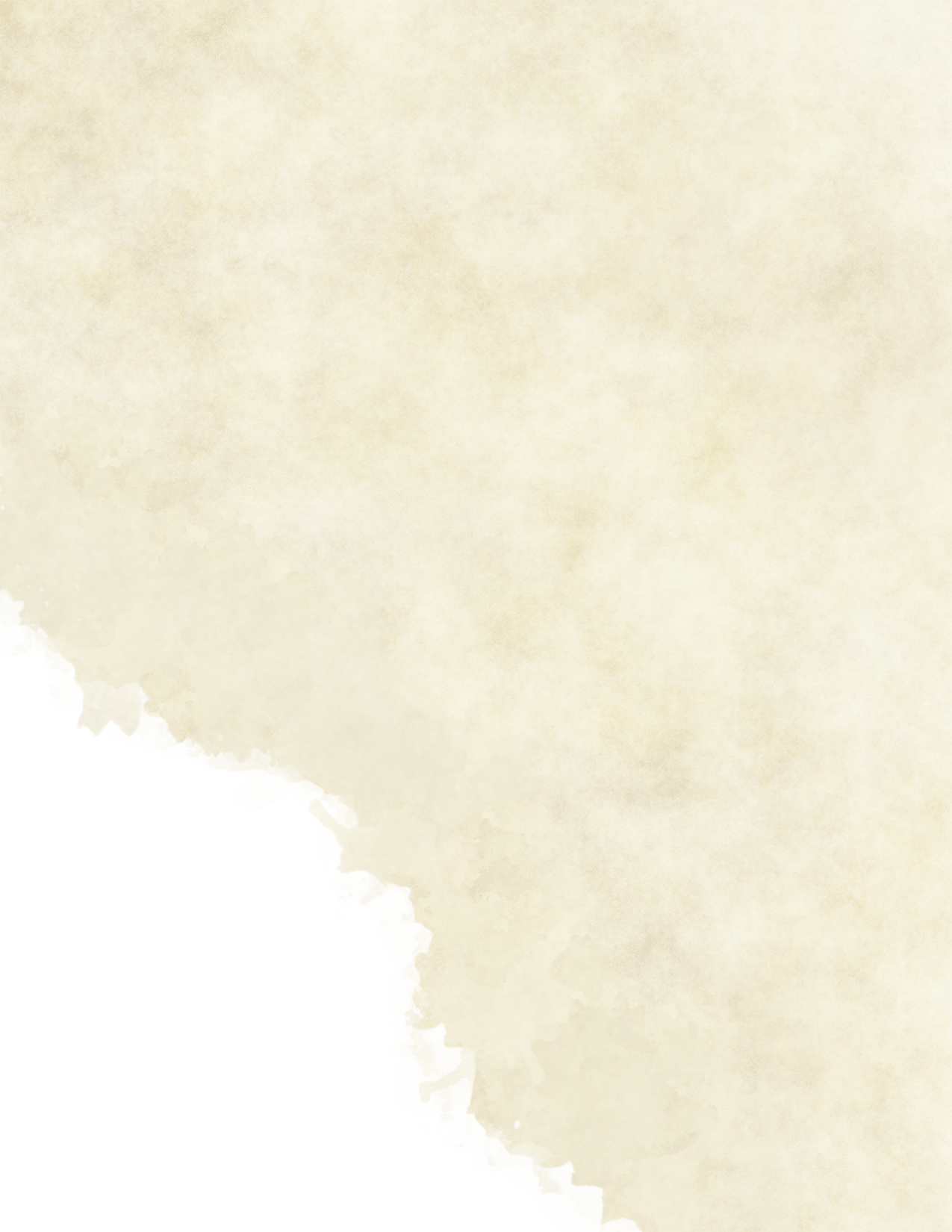Weapons Remastered
This remaster massively expands the original Weapons Remastered by another author, which can be found here. Both exist to diversify weapons' use and function in combat. This chapter is not an attempt to increase their power, but instead mirror the diversity of options and rider effects exhibited by their caster counterparts' cantrips and weapons' use in real life—with significant abstraction.
It does improve them slightly, but the ultimate goal is diversification and the overall increase is minimal. It also attempts to remove the universal popularity of some weapons (such as the rapier) in situations where it might not apply, and instead make all weapons at least somewhat viable.
To do so, each weapon has a combination of several unique properties, which add new functions, passive bonuses, or options. Many entirely new weapons join the existing roster, to include some weapons of great tactical value in history which 5e neglected.
Ideally, players will intuit and remember properties with ease. Properties should in most cases adhere to the design philosophy of 5e, and most are relatively simple or expand properties which already existed. Ultimately, they should have few negatives for massive gains in fun factor.
In some cases, these properties conflict or overlap with feats, a difficult problem. On one hand, martial characters' progression encourages them to take feats. On the other, the removal of "feat taxes" (feats necessary to make builds viable) is an admirable goal as well.
Ultimately, feats provide much larger bonuses, and those with properties encroaching on their niche remain the superior option. They are a specialization with an enormous opportunity cost and should be treated as such.
This chapter adds no new actions and works to adhere to the already-extant combat system without additional redundancies, extras, or rules bloat, though it does tweak much. Ultimately, it hopes to increase martial characters' ability to think tactically and add a level of nuance which characters without magic or superiority dice sorely lacked.
To those unused to such options, this sudden, glaring change warps the game. Its size daunts newcomers. However, it appeals enormously to martial play, makes choice of weapon have meaning, and it's easy to learn your favorites. Spellcasters continue to track far more options and resources, and they operate beautifully.
As time passes, most warriors will find their favorites, memorize those options, and remain loyal to their preferred style. The keyword, then, is style. No longer is a longsword interchangeable with a battleaxe, or a spear with a javelin. By its very nature this rework differentiates player characters even more and lets players make them their own. This mechanical and stylistic diversity is the ultimate benefit of tabletop roleplay over other games, and this remaster helps that aspect shine.
This content is no longer up-to-date. It exists as part of a larger document, The Warrior's Codex, which can be found here
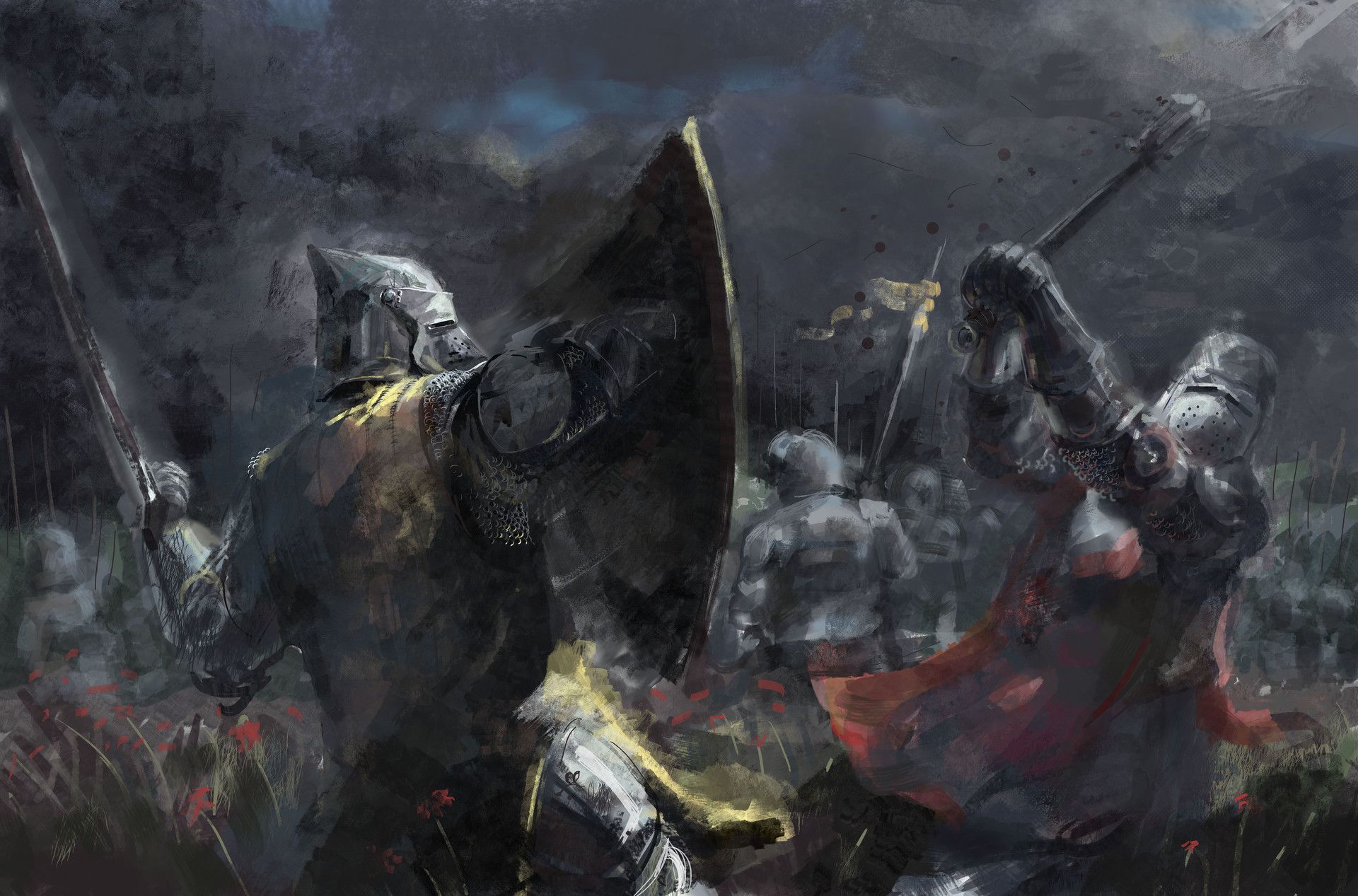
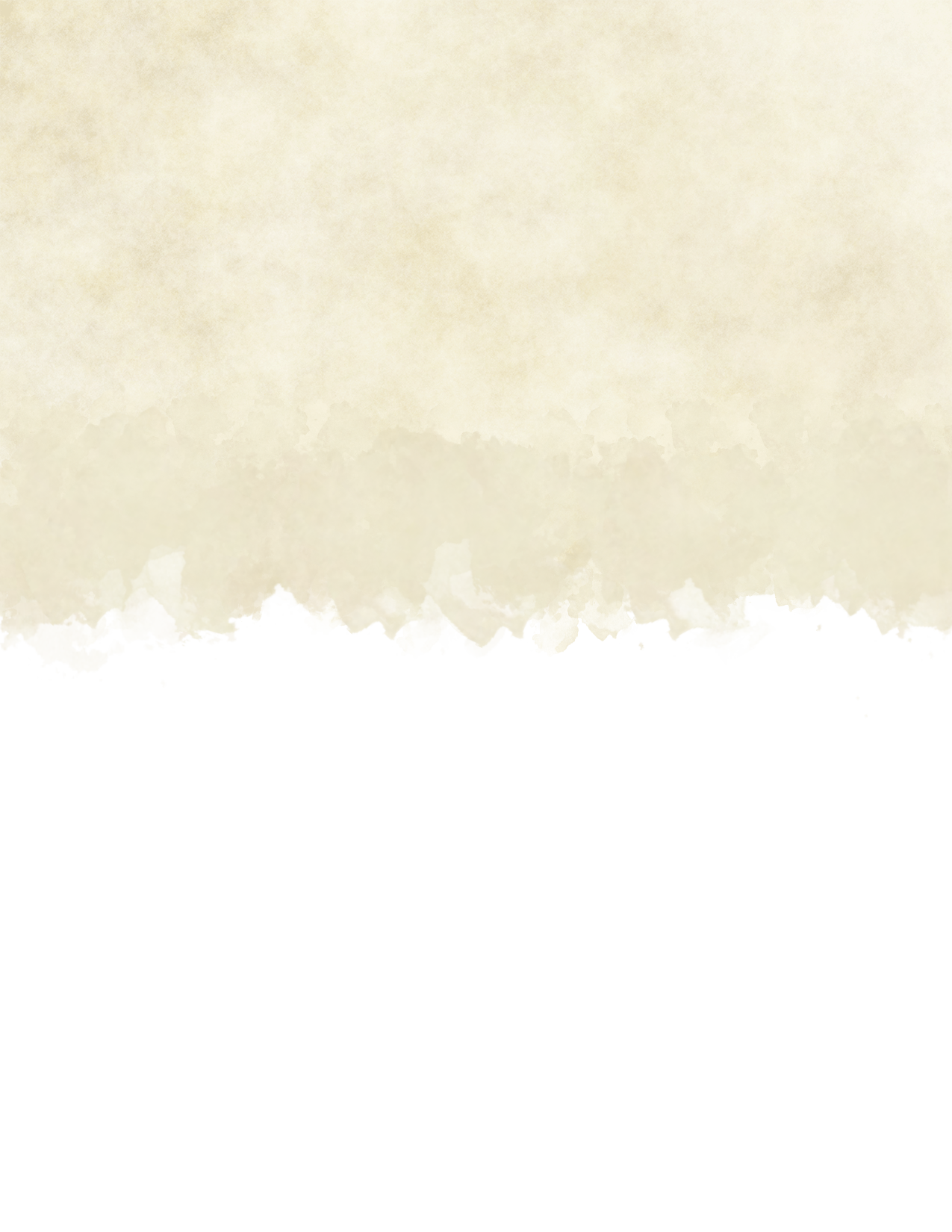
Weapon Properties
Ammunition
You can use a weapon that has the ammunition property to make a ranged attack only if you have ammunition to fire from the weapon. Each time you attack with the weapon, you expend one piece of ammunition.
Drawing the ammunition from a quiver, case, or other container is part of the attack you make with this weapon (you need a free hand to load a one-handed weapon). At the end of the battle, you can recover half your expended ammunition by taking a minute to search the battlefield.
Bypass
These flexible weapons wrap around shields and other personal defenses. When you attack with a bypass weapon, you ignore the AC bonus granted by shields and features that parry or deflect attacks.
Cavalry
These weapons are well-suited to combat on the move. If you damage a creature with a cavalry weapon after moving at least 30 feet straight toward a target while mounted, you deal an extra 1d6 damage.
Ensnaring
These weapons feature chains, hooks, or other parts that entangle. When you hit with an ensnaring weapon, you can use your bonus action to attempt to shove the target prone, disarm it (DMG page 271), or pull it into a space within 5 feet of you. You can use your weapon attack bonus instead of your Strength (Athletics) bonus when you attempt this action.
When you attempt to disarm a creature using a weapon with the ensnaring property, you do not have disadvantage on the roll if the target is larger than you.
Finesse
These precise weapons lend themselves to dextrous combat. When you attack with a finesse weapon, you use your choice of your Strength or Dexterity modifier for the attack and damage rolls. You must use the same modifier for both rolls.
Finisher
Finisher weapons are well-suited to executing enemies at your mercy. When you damage a prone creature with a finisher weapon, you roll an additional weapon damage die.
Gunpowder
These weapons utilize volatile powder as a propellant to fire projectiles or explode. They cannot be used underwater, and ammunition from these weapons cannot be reused. When you make an attack, the weapon flashes, expels smoke, and creates a bang that can be heard within 300 feet. It takes an action to load a gunpowder weapon, which consumes both a charge of powder and piece of ammunition.
Carrying or storing too much powder is risky. When an item with the gunpowder property takes fire or lightning damage, it explodes. The blast forces all creatures and objects within 20 feet to make a DC 12 Dexterity saving throw. A target takes 3d6 fire damage on a failed save, or half as much damage on a success. A creature wearing, carrying, or wielding an exploding item automatically fails this saving throw.
Heavy
These weapons are unwieldier than most. Unless a creature has a Strength score of 12 or higher, it has disadvantage on attacks made with heavy weapons. A Small or smaller creature always suffers this disadvantage.
When you attack with a heavy weapon that you are proficient in, you can forego adding your proficiency bonus to the attack roll. If the attack hits, you add that proficiency bonus to the damage roll. You must decide to do this before making the attack roll. This ability can be used in conjunction with the Great Weapon Master feat.
Light
A light weapon is small and easy to handle, making it ideal for use in an off-hand or fighting with two weapons. See the rules for two-weapon fighting part IV.
Loading
Because of the time required to load this weapon, you fire only one piece of ammunition when you attack with it, regardless of the number of attacks you can normally make.
Nonlethal
The weapon is designed to incapacitate or is otherwise capable of delivering a hit that does not kill the target. When you choose to knock a creature out instead of killing it, nonlethal weapons deal their normal damage.
Parry
If a creature hits you with a melee attack while you are wielding a weapon with the parry property that you are proficient with, you can use your reaction to add half your proficiency bonus to your AC for that attack, potentially causing it to miss. If you do so while wielding two parrying weapons, you add your entire proficiency bonus instead.
Prone Fighting
When you are prone and make a weapon attack with this weapon, you do not suffer disadvantage for being prone.
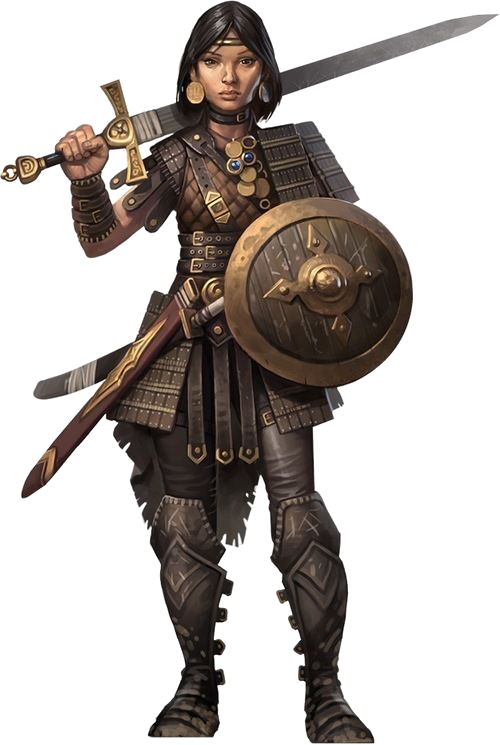
Ranged
A weapon that can be used to make a ranged attack has a range in parentheses after the ammunition or thrown property. The range lists two numbers. The first is the weapon's normal range in feet, and the second indicates the weapon's long range. When attacking a target beyond normal range, you have disadvantage on the attack roll. You can't attack a target beyond the weapon's long range.
Some ranged weapons have a Strength requirement listed. You cannot make ranged attack rolls with that ranged weapon if your Strength is lower than that value.
Reach
This weapon's extended length adds 5 feet to your reach when you attack with it, as well as when determining your reach for opportunity attacks. Reach weapons cannot be used for two-weapon fighting regardless of strength or feats.
Special
Special weapons have entirely unique attributes, detailed after the weapon charts.
Status
Status weapons inflict extra effects on powerful hits. When an attack roll with a status weapon exceeds the target's AC by 5 or more, it inflicts an additional status effect based upon the type of damage dealt. A critical hit also triggers status. If you inflict status on an attack but deal no bludgeoning, piercing, or slashing to a creature with the attack, you do not trigger the effects of status.
Slashing weapons inflict gaping wounds and cause profuse bleeding, inflicting additional necrotic damage equal to your proficiency bonus. Objects, Constructs, and Elementals and other creatures that do not bleed may be immune to this damage, at the discretion of your DM.
Bludgeoning weapons hit with staggering blows that daze the target. Inflicting this status prevents the targeted creature from taking reactions and reduces its passive Perception by 5 until the start of its next turn.
Piercing weapons reward precise or focused attacks, punching holes in enemy defenses. When you inflict this status, the next attack made against the target gains a bonus equal to your proficiency bonus.
Improvised weapons may inflict status depending on their damage type and the discretion of your DM.
Sundering
Sundering weapons crush, break, or penetrate armor. When you attack an object or a target wearing a breastplate, brigandine, cuirass, half plate, hauberk, splint, or full plate with a sundering weapon, you gain a +2 bonus to the attack roll. You also gain this bonus against creatures with thick shells, metallic hides, and other creatures at the discretion of your DM. Weapons with this property ignore the damage reduction provided by certain kinds of armor.
Typically, you cannot add your proficiency bonus to any die roll more than once. However, if WCX effects such as status: piercing allow you to add your proficiency bonus to an attack or damage roll multiple times (once from your attack roll and once from piercing status that you inflicted on a previous attack), you can do so.
Sweeping
These weapons strike in broad motions. When you reduce an enemy to 0 hit points with a sweeping weapon, you can target another creature within 5 feet of the first that you can reach and, if the original attack roll can hit it, apply any remaining damage to it. If that creature is likewise reduced to 0 hit points, repeat this process, carrying over the remaining damage until there are no valid targets, or until the damage carried over fails to kill an enemy.
Thrown
If a weapon has the thrown property, you can throw the weapon to make a ranged attack. If the weapon is a melee weapon, you use the same ability modifier for attack and damage rolls that you would use for a melee attack with it. The standard and maximum ranges of a weapon with the thrown property increases by a number of feet equal to 5 times your Strength modifier, unless your Strength modifier is negative.
Two-Handed
The weapon is large or cumbersome, and must be wielded in two hands to attack with it. If one of your hands is occupied by performing somatic components, grappling, etc, you cannot attack with this weapon until you return your hand to the weapon. This property is relevant only when you attack with the weapon, not when you simply hold it.
Versatile
The weapon can be wielded in either one or two hands. A damage value in parentheses appears with the property, indicating the damage dealt when you use it with two hands.
Wind-up
When prepared for the right moment, the weapon can be devastatingly effective. In place of a weapon attack, you can wind up your weapon or brace it against the ground, depending on the weapon's design. The next time you hit with the wound-up weapon before the start of your next turn, you can roll three additional damage dice. A wound-up melee weapon can be used to make an opportunity attack when a hostile creature that you can see enters your reach.
Winged
These weapons have specially-shaped heads that halt the forward movement of their target toward the wielder after piercing the target, and can be used to catch shields and weapons. After damaging a Huge or smaller creature with a melee attack from a winged weapon, the creature cannot move toward you and must expend 2 feet of movement for every foot it moves within your reach. This reduction ends if it leaves your reach or you make another attack roll with the winged weapon. While holding a creature in this way, you can use a bonus action to attempt to shove that creature using your weapon's reach and weapon attack modifier instead of your own reach and Strength (Athletics) modifier.
You can use a bonus action to attempt to disarm a creature within your reach, using your weapon attack modifier in place of Strength (Athletics).
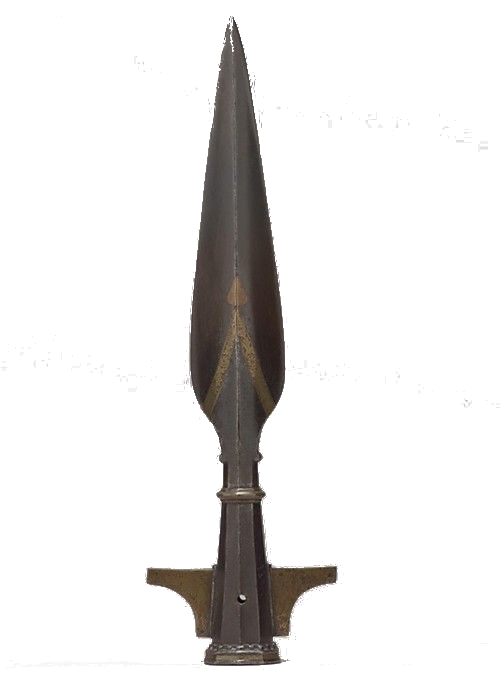
Weapon Charts
The following section lists new and existing weapons, with properties added. Some weapons list multiple damage types. When attacking with one of those weapons, you indicate which damage type you use before you make the attack roll.
Simple Melee Weapons
| Name | Cost | Damage | Weight | Properties |
|---|---|---|---|---|
| Boar Spear | 5 gp | 1d6 piercing | 5 lb. | Versatile (1d8), special, winged |
| Club | 1 sp | 1d4 bludgeoning | 2 lb | Light, nonlethal |
| Dagger | 4 gp | 1d4 piercing/slashing | 3/4 lb. | Finesse, light, prone fighting, thrown (20/60) |
| Goedendag | 1 gp | 1d6 bludgeoning/piercing | 3 lb. | Sundering, finisher, two-handed, wind-up |
| Greatclub | 5 sp | 2d4 bludgeoning | 10 lb. | Heavy, status, two-handed |
| Handaxe | 1 gp | 1d6 slashing | 1 lb. | Light, status, thrown (20/60) |
| Javelin | 5 sp | 1d6 piercing | 2 lb. | Thrown (60/120) |
| Light Hammer | 2 sp | 1d4 bludgeoning | 1 lb. | Light, status, sundering, thrown (20/60) |
| Mace | 5 gp | 1d6 bludgeoning | 4 lb. | Status, sundering |
| Peasant Flail | 5 sp | 1d8 bludgeoning | 3 lb. | Reach, status, two-handed |
| Quarterstaff | 2 sp | 1d6 bludgeoning | 4 lb. | Nonlethal, versatile (2d4) |
| Shortspear | 1 gp | 1d6 piercing | 4 lb. | Light, versatile (1d8) |
| Sickle | 1 gp | 1d4 slashing | 2 lb. | Ensnaring, light, status |
Simple Ranged Weapons
| Name | Cost | Damage | Weight | Strength | Properties |
|---|---|---|---|---|---|
| Blowgun | 10 gp | 1 piercing | 1 lb. | — | Ammunition (25/50), loading, special |
| Dart | 5 cp | 1d4 piercing | ¼ lb. | — | Finesse, thrown (20/60) |
| Light Crossbow | 30 gp | 1d8 piercing | 1 lb. | Str 8 | Ammunition (60/120), loading, two-handed |
| Shortbow | 25 gp | 1d6 piercing | 1 lb. | Str 9 | Ammunition (90/360), two-handed |
| Sling | 1 sp | 1d4 bludgeoning | 1/8 lb. | — | Ammunition (30/60), wind-up |
| Staff Sling | 4 sp | 1d6 bludgeoning | 5 lb. | — | Ammunition (80/160), special, two-handed |
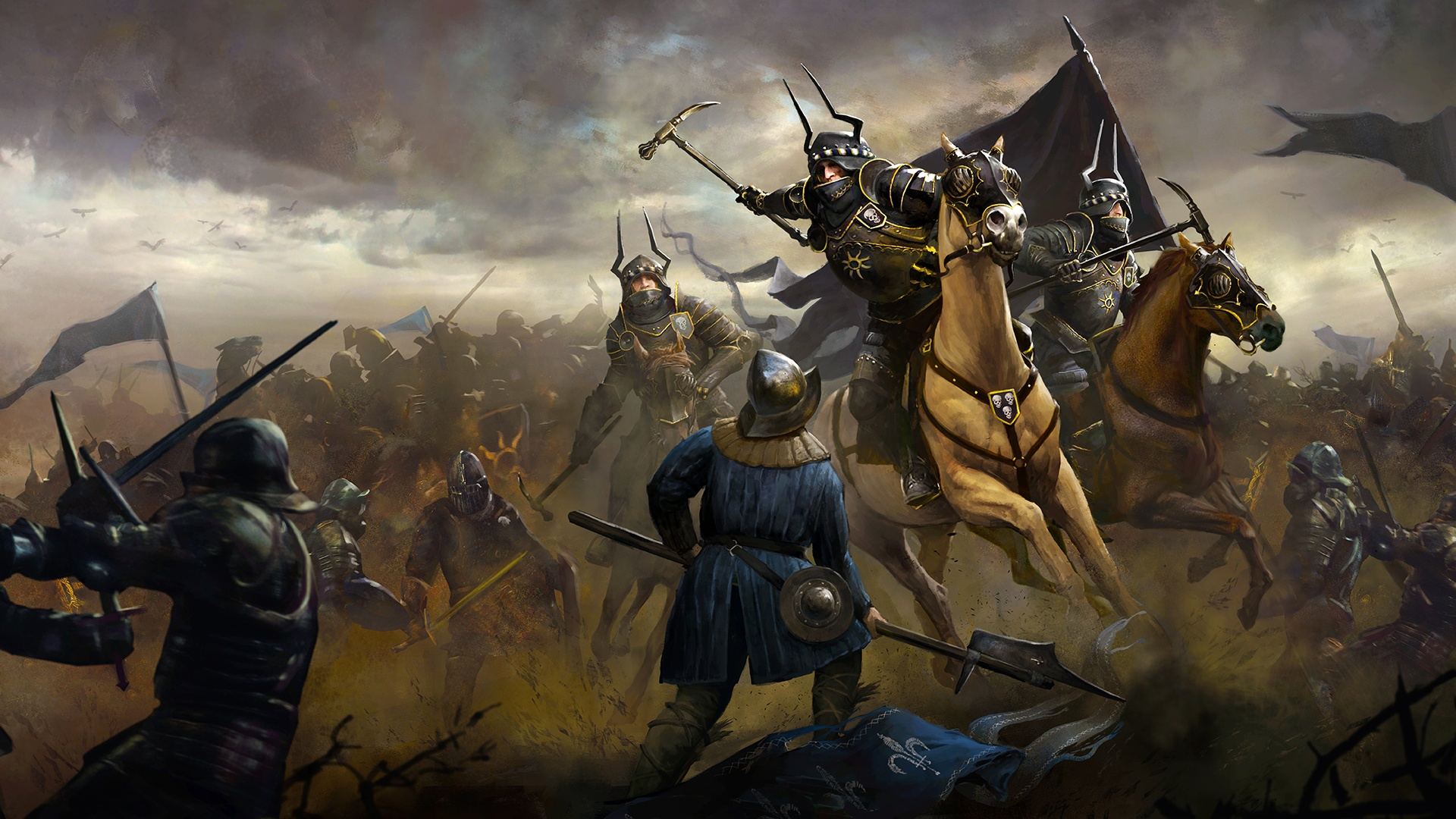
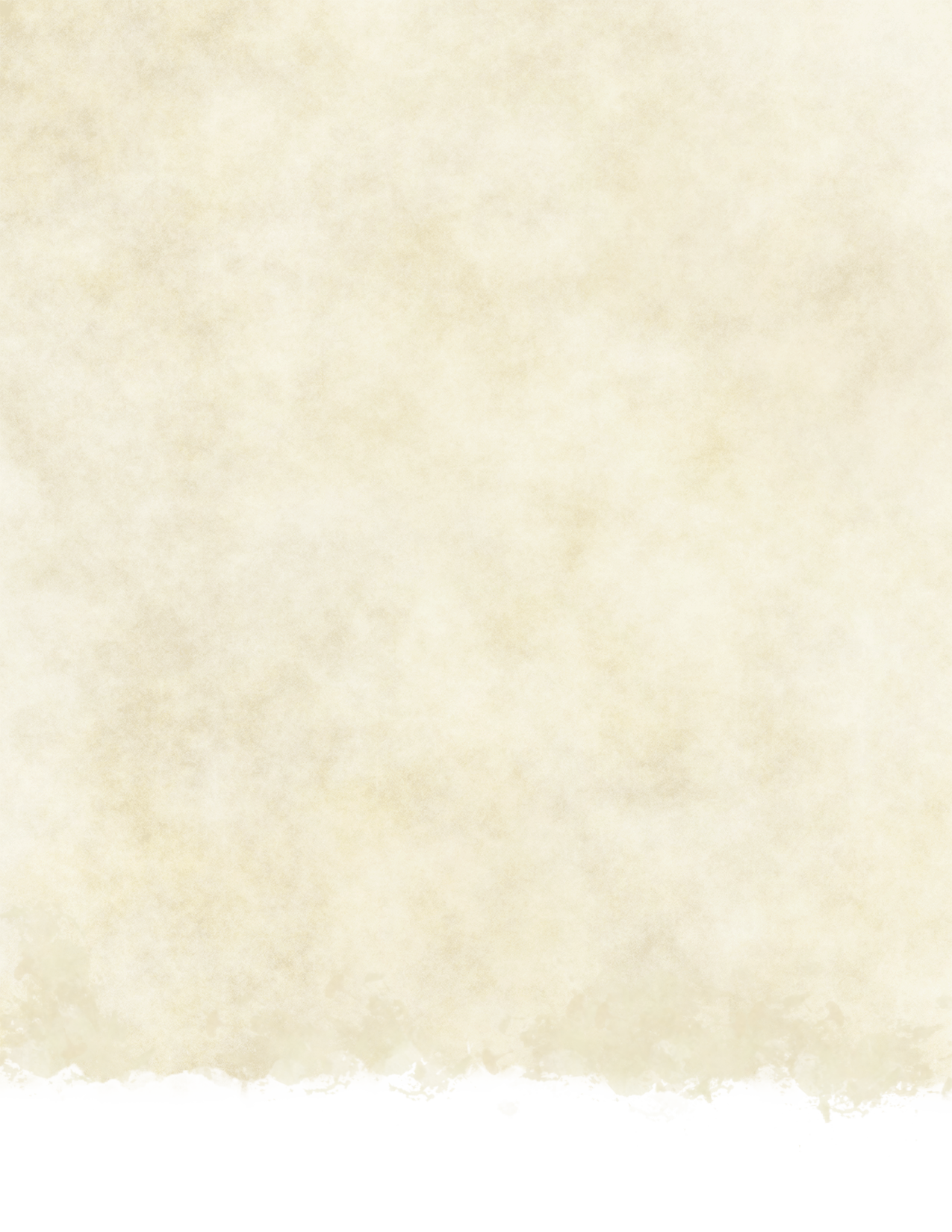



Martial Melee Weapons
| Name | Cost | Damage | Weight | Properties |
|---|---|---|---|---|
| Arming Sword | 20 gp | 1d8 piercing/slashing | 2 lb. | Parry, special |
| Bastard Sword | 30 gp | 1d8 piercing/slashing | 3 lb. | Parry, status, versatile (2d4) |
| Battleaxe | 10 gp | 1d8 slashing | 3 lb. | Status, sweeping, versatile (2d4) |
| Cestus | 1 gp | 1d4 bludgeoning | 1/2 lb. | Light, nonlethal, special, status |
| Estoc | 25 gp | 1d8 piercing | 2 lb. | Finesse, sundering, versatile (2d4) |
| Flail | 10 gp | 1d8 bludgeoning/piercing | 2 lb. | Bypass, ensnaring, wind-up |
| Glaive | 20 gp | 1d10 slashing | 5 lb. | Heavy, reach, sweeping, two-handed |
| Greataxe | 25 gp | 1d12 slashing | 4 lb. | Finisher, heavy, special, two-handed |
| Greatsword | 50 gp | 2d6 piercing/slashing | 6 lb. | Heavy, parry, status, sweeping, two-handed |
| Guisarme | 10 gp | 1d10 piercing | 5 lb. | Ensnaring, heavy, reach, two-handed |
| Halberd | 25 gp | 1d10 piercing/slashing | 5 lb. | Ensnaring, heavy, reach, status, two-handed |
| Harpoon | 10 gp | 1d8 piercing | 4 lb. | Status (slashing), thrown (20/60) |
| Lance | 10 gp | 1d12 piercing | 1 lb. | Cavalry, reach, special, status |
| Longsword | 35 gp | 1d10 bludgeoning/piercing/slashing | 3 lb. | Parry, status, sundering, two-handed |
| Lucerne | 20 gp | 1d10 bludgeoning/piercing | 6 lb. | Heavy, reach, sundering, two-handed |
| Maul | 10 gp | 2d6 bludgeoning | 10 lb. | Finisher, heavy, status, sundering, two-handed |
| Morningstar | 15 gp | 1d8 bludgeoning/piercing | 4 lb. | Special, sundering |
| Parrying Dagger | 5 gp | 1d4 piercing | 1 lb. | Finesse, light, parry, prone fighting, special |
| Pike | 5 gp | 1d10 piercing | 5 lb. | Heavy, reach, two-handed, wind-up |
| Pollaxe | 25 gp | 1d10 bludgeoning/piercing/slashing | 5 lb. | Heavy, parry, status, two-handed |
| Ranseur | 25 gp | 1d10 piercing/slashing | 5 lb. | Heavy, reach, two-handed, winged |
| Rapier | 25 gp | 1d8 piercing | 3 lb. | Finesse, parry, status |
| Rondel | 5 gp | 1d4 piercing | 1 lb. | Finesse, finisher, light, prone fighting, sundering |
| Sabre | 25 gp | 1d8 slashing | 3 lb. | Cavalry, finesse, parry |
| Scimitar | 20 gp | 1d6 slashing | 3 lb. | Cavalry, finesse, light, status |
| Shortsword | 15 gp | 1d6 piercing/slashing | 2 lb. | Finesse, light, parry, status |
| Shotel | 15 gp | 1d8 piercing/slashing | 3 lb. | Bypass, ensnaring, finesse |
| Spear | 2 gp | 1d8 piercing | 4 lb. | Reach, versatile (1d10) |
| Unarmed Strike | — | 1 bludgeoning | — | Nonlethal, special |
| War Pick | 15 gp | 1d8 piercing | 2 lb. | Status, sundering, versatile (2d4) |
| Warhammer | 15 gp | 1d8 bludgeoning | 2 lb. | Status, sundering, versatile (2d4) |
Martial Ranged Weapons
| Name | Cost | Damage | Weight | Strength | Properties |
|---|---|---|---|---|---|
| Atlatl | 20 gp | 1d8 piercing | 2 lb. | — | Ammunition (100/200), special, status |
| Hand Crossbow | 75 gp | 1d6 piercing | 2 lb. | — | Ammunition (30/60), light, loading, prone fighting |
| Heavy Crossbow | 50 gp | 1d12 piercing | 6 lb. | Str 12 | Ammunition (100/200), heavy, loading, sundering, two-handed |
| Longbow | 70 gp | 1d10 piercing | 2 lb. | Str 13 | Ammunition (200/800), heavy, status, two-handed |
| Recurve Bow | 50 gp | 1d8 piercing | 1 lb. | Str 10 | Ammunition (100/400), two-handed |


Shields
| Name | Cost | +AC | Weight | Properties | Grip |
|---|---|---|---|---|---|
| Buckler | 8 gp | 1 | 2 lb. | Parry | Handle |
| Pavise | 25 gp | 2 | 7 lb. | Special | Handle |
| Shield | 10 gp | 2 | 5 lb. | — | Handle, strap |
| Tower Shield | 50 gp | 3 | 16 lb. | Special | Strap |
Ammunition
| Name | Cost | Weight | Weapon | Properties |
|---|---|---|---|---|
| Barbed Quarrel | 15 cp | 1 oz. | Crossbow | Adds serrated modification |
| Blowgun Needle | 2 cp | 1 oz. | Blowgun | — |
| Bodkin Arrow | 30 cp | 1 oz. | Bow | Sundering |
| Broadhead Arrow | 50 cp | 1 oz. | Bow | Slashing damage, status |
| Bullet | 30 cp | ⅛ oz. | Gun | — |
| Dart | 5 cp | 4 oz. | Atlatl | — |
| Elemental Ammunition | 50 gp | 1 oz. | All | Special |
| Field Arrow | 5 cp | 1 oz. | Bow | Nonlethal |
| Firecage Arrow | 1 gp | 1 oz. | Bow | Special |
| Grapeshot | 10 gp | 3 oz. | Gun | Special |
| Hunting Bolt | 2 cp | 1 oz. | Crossbow | Bludgeoning damage, Nonlethal |
| Quarrel | 5 cp | 1 oz. | Crossbow | Sundering |
| Sling Bullet | 1/5 cp | 1 oz. | Sling | — |
| Silver Bullet | 15 gp | ⅛ oz. | Gun | Special |
| Whistling Arrow | 1 gp | 1 oz. | Bow | Special |
Exotic Weapons
Exotic weapons are unwieldy, niche, or novel. Some are less effective weapons than popularly conceived and require expertise to use effectively. You can gain proficiency in an exotic weapon from class or race features, training rules, or the Weapon Master feat.
Exotic Melee Weapons
| Name | Cost | Damage | Weight | Properties |
|---|---|---|---|---|
| Chain Whip | 5 gp | 1d6 bludgeoning | 10 lb. | Bypass, ensnaring, special, versatile (1d8) |
| Garotte Wire | 5 gp | 1d6 slashing | 1/4 lb. | Finesse, light, special, two-handed |
| Gauntlet-sword | 25 gp | 1d6 slashing | 4 lb. | Cavalry, light, special |
| Hooksword | 35 gp | 1d8 slashing | 3 lb. | Ensnaring, parry, special |
| Trident | 5 gp | 2d4 piercing | 4 lb. | Finisher, versatile (2d6), winged |
| Whip | 2 gp | 1d4 slashing | 3 lb. | Ensnaring, finesse, reach |
Exotic Ranged Weapons
| Name | Cost | Damage | Weight | Strength | Properties |
|---|---|---|---|---|---|
| Arquebus | 400 gp | 2d8 piercing | 10 lb. | — | Ammunition (60/120), gunpowder, loading, two-handed |
| Boomerang | 25 gp | 1d4 bludgeoning | 1 lb. | Str 9 | Finesse, nonlethal, special, thrown (30/60) |
| Greatbow | 200 gp | 2d6 piercing | 10 lb. | Str 18 | Ammunition (150/600), heavy, special, status, two-handed |
| Handgonne | 250 gp | 2d6 piercing | 4 lb. | — | Ammunition (30/90), gunpowder, loading |
| Net | 1 gp | — | 1 lb. | — | Special, thrown (5/15) |
Exotic Shields
| Name | Cost | Damage | Weight | Grip | Properties |
|---|---|---|---|---|---|
| Dueling Shield | 75 gp | — | 6 lb. | Handle | Special, versatile (1d8 piercing) |
| Lantern Shield | 100 gp | 1d4 piercing | 3 lb. | Strap | Light, special |
Special Weapons
Atlatl. The atlatl benefits from skill with both ranged and thrown weapons. You can use your Strength modifier to increase the range of darts hurled with this weapon, as though it had the thrown property, and it and its darts are considered thrown weapons when used to make ranged attacks for the purposes of benefits such as the Thrown Weapon Fighting fighting style.
Arming Sword. The techniques of an arming sword are fairly basic, easy to learn, and highly defensive. As a result, you can safely focus on offense and deal more devastating attacks. You can inflict status with this weapon, and when you do you inflict the effects of both status: piercing and status: slashing, regardless of the damage type you dealt.
Boar Spear. This thick, heavy spear is better wielded in two hands than one. When wielded in both hands, a boar spear gains the reach and wind-up properties in addition to the increased damage it gains from the versatile property.
Boomerang. This weapon returns to your hand if you miss.
Blowgun. If you are hidden when you attack with this weapon, you do not reveal your location.
Blowgun Needle. These minute needles are small enough that when you apply a poison to them, a dose covers 10 pieces of ammunition instead of the usual 3.
Cestus. Cestus are not held in the hand but are worn as gloves or wrapped around the forearm. If you are wielding a cestus, you can use that hand to grapple or shove an enemy, but you cannot make attacks with that hand without ending the grapple. You cannot wield other weapons or shields in that hand, nor can it perform somatic components. Because of its small size and attachment to your hand, you cannot drop a cestus or be disarmed of one unless you are incapacitated. You must use an action to don or doff a cestus, but can don or doff a pair of cestus in one action.
Chain Whip. A length of chain is unbalanced and difficult to use, but can be a far-reaching weapon. When held in both hands, this weapon gains the reach property.
Dueling Shield. These large shields have a large triangular boss and hooks and blades built into the rim. A dueling shield adds a +2 bonus to AC when wielded in one hand, as normal. When wielded in both hands, it acts as a melee weapon that deals 1d8 piercing damage with the ensnaring, heavy, and parry properties in addition to its AC bonus.
Elemental Ammunition. Elemental ammunition includes enchanted bullets, quarrels, needles, or arrows charged with magic. You cannot buy elemental ammunition, but you can craft it if you have proficiency in the appropriate tools and the Arcana skill, and can cast a spell that deals acid, cold, fire, lightning, or thunder damage without expending a spell slot. The ammunition deals that damage instead of its normal type, and returns to normal after one use.
Firecage Arrow. The curved metal bars that flare out from the shaft of this arrow create a cage that carries a burning coal through the air, which sheds dim light in a 5 ft. radius. When you hit with a firecage arrow, half the damage you deal is fire damage, instead of piercing. If you miss with a firecage arrow, choose a space within 15 feet of the target. The arrow ignites objects in that space that aren't being worn or carried.
Garotte Wire. A garrote cannot be used on any creature more than 1 size larger than you, and you can only attack with a garotte if you have advantage. On a hit, the target is automatically grappled and restrained. Until the grapple ends, the target cannot breathe and chokes (PHB 183).
Creatures that do not need to breathe are immune to a garotte wire's choke at the discretion of the DM.
Gauntlet-Sword. This specialized sword is built into a stiff gauntlet. You cannot drop or be disarmed of a gauntlet-sword. It takes an action to don or doff a gauntlet sword.
Grapeshot. Instead of a single bullet, a large number of tiny projectiles fill a canister of grapeshot ammunition. Upon firing, the projectiles fly in a line 5 foot wide and as long as the gun's normal range. You can target a number of creatures in that line equal to your proficiency bonus, making new attack rolls for each creature.
Greataxe. The blows of a greataxe stagger and daze opponents. You can inflict status with this weapon, and when you do you inflict both status: slashing and status: bludgeoning, even though you only deal slashing damage.
Greatbow. An enormous bow with massive draw weight, you must use Strength instead of Dexterity for attack and damage rolls with this weapon.
Hooksword. If you are holding a hooksword in each hand, checks from the weapon's ensnaring property are made with advantage, and the ability to link both hookswords together gives this weapon the sweeping property.
Lance. You have disadvantage when you use a lance to attack a target within 5 feet of you. A lance requires two hands to wield when you aren't mounted.
Lantern Shield. An apparatus combining a small shield, a lantern, a gauntlet, and several blades. When wielded it adds +2 to your Armor Class, can be used to make a melee weapon attack that deals 1d4 piercing damage, and can store a lit bullseye lantern, which you wield while holding this shield. If you are disarmed of this shield or doff it, the lantern moves with it. A lantern can be added or removed as an action.
Morningstar. You can inflict status with this weapon, and when you do you inflict the effects of both status: piercing and status: bludgeoning, regardless of the damage type dealt.
Net. A Large or smaller creature hit by a net is restrained until freed. A net has no effect on creatures that are formless, or are Huge or larger. A creature can free itself or others by using its action and succeeding on a DC 10 Strength check. Dealing 5 slashing damage to the net (AC 10) also frees the creature without harming it, and destroys the net.
Parrying Dagger. Parrying daggers are best used as defensive options when wielded in conjunction with another weapon. When you hold a parrying dagger in one hand and another weapon in your other hand, you gain a +1 bonus to AC. This bonus cannot exceed 1, even if you have a parrying dagger in each hand.
Pavise. A pavise is a tall, oblong shield used to provide portable cover. You can use your action to plant a pavise in the ground, doffing it as part of the same action. In this state it is no longer wielded and stands on its own to act as 1/2 cover for an upright creature, or total cover for a prone one.
Silver Bullet. This bullet deals no special damage against most creatures, but any attack with a silver bullet that hits a creature with a special vulnerability to silver, like some fiends or shapechangers, is an automatic critical hit.
Staff Sling. The shaft that adds leverage to the projectiles this sling throws can also be used for close-range combat. This weapon can make be wielded in melee combat as a quarterstaff. In addition, this weapon can be used to throw bombs to any point within its long range.
Tower Shield. To wield a tower shield, you must have at least 15 Strength. You can use your reaction to gain three-quarters cover against harmful area-of-effects such as breath weapons or spells when targeted by such effects, unless the effect travels around corners. If you are directly between another creature of your size or smaller and the effect's origin, that creature gains half cover against the effect.
Unarmed Strike. An attack with any part of your body, such as a fist or knee. Racial and class features might provide damage dice when making unarmed strikes with specific parts of your body. Unarmed strikes act as a melee weapon for features that activate after a successful weapon attack, such as martial maneuvers, divine smites, or spells delivered with weapons, but is not considered a weapon when an effect or ability such as Two-Weapon Fighting requires you to hold one.
Whistling Arrow. The bulb carved from wood or antler in this arrow creates a loud whistle as it flies through the air that creatures within 300 feet of the line the arrow travels from the archer to its target can clearly hear.
Shield Grips
Shield grips determine how you hold a shield.
Handles are a wood or metal handlebar on the inside of a shield. These shields can be doffed or donned with the item interaction you receive as part of your turn and can be dropped freely, but enemies have advantage on checks made to disarm you of them.
Straps attach the shield to the arms, reinforcing the handle with a series of cloth or leather straps. These shields take an action to don or doff, and enemies have disadvantage on checks made to disarm you of the shield.
While some shields list more than one grip type on their table entries, an individual shield of has only one. You choose the type of grip it has when it is created or purchased.
Shield Attacks
The exotic shields and the Shield Master feat (detailed
in Part IV) allow attacks with shields. A magical
shield with a bonus to AC only increases the Armor
Class of the user and does not grant a bonus to attack
and damage rolls with the shield. If a magical shield applies its bonus to both AC and attack and damage rolls, its rarity tier increases by one.
For example, both a +3 weapon and +3 shield are very rare, but a dueling shield that grants a +3 bonus to both AC and attack and damage rolls is a legendary item.
Armor Revised
The Armor Table shows the cost, weight, armor class, and properties each type of armor. Class proficiencies and stealth rules remain unchanged, as do donning and doffing rules. However, armor weighs half as much while you wear it for the purposes of determining encumbrance.
When worn, half plate and heavy armor offer Damage Reduction. When you take nonmagical bludgeoning, piercing or slashing damage, the damage you take is reduced by an amount equal to half your proficiency bonus, rounded down. Full plate reduces the damage by an amount equal to your proficiency bonus instead. This reduction applies before you apply resistances or vulnerabilities.
Starting Armor
You start with the armor listed for your class. If you start with a shield, you can choose any non-exotic shield.
- Artificer: Gambeson or brigandine
- Bard: Leather
- Cleric: Brigandine or leather, hauberk if proficient
- Druid: Leather
- Fighter: Leather or hauberk
- Paladin: Hauberk
- Ranger: Brigandine or leather
- Rogue: Leather
Armor Table
| Light | Cost | AC | Strength | Stealth | Weight |
|---|---|---|---|---|---|
| Leather | 5 gp | 11+Dex | — | — | 8 lb. |
| Gambeson | 10 gp | 12+Dex | — | — | 10 lb. |
| Jackchains | 25 gp | 13+Dex | — | Disad. | 15 lb. |
| Medium | |||||
| Hide | 10 gp | 12+Dex (max 2) | — | — | 12 lb. |
| Breastplate | 200 gp | 13+Dex (max 3) | — | — | 20 lb. |
| Brigandine | 100 gp | 14+Dex (max 2) | — | Disad. | 25 lb. |
| Cuirass | 400 gp | 14+Dex (max 3) | — | — | 25 lb. |
| Half-plate | 1,000 gp | 15+Dex (max 3) | Str 12 | Disad. | 30 lb. |
| Heavy | |||||
| Scale | 100 gp | 15 | Str 12 | Disad. | 40 lb. |
| Hauberk | 150 gp | 16 | Str 13 | Disad. | 30 lb. |
| Splint | 300 gp | 17 | Str 14 | Disad. | 35 lb. |
| Full Plate | 1,500 gp | 18 | Str 14 | Disad. | 45 lb. |
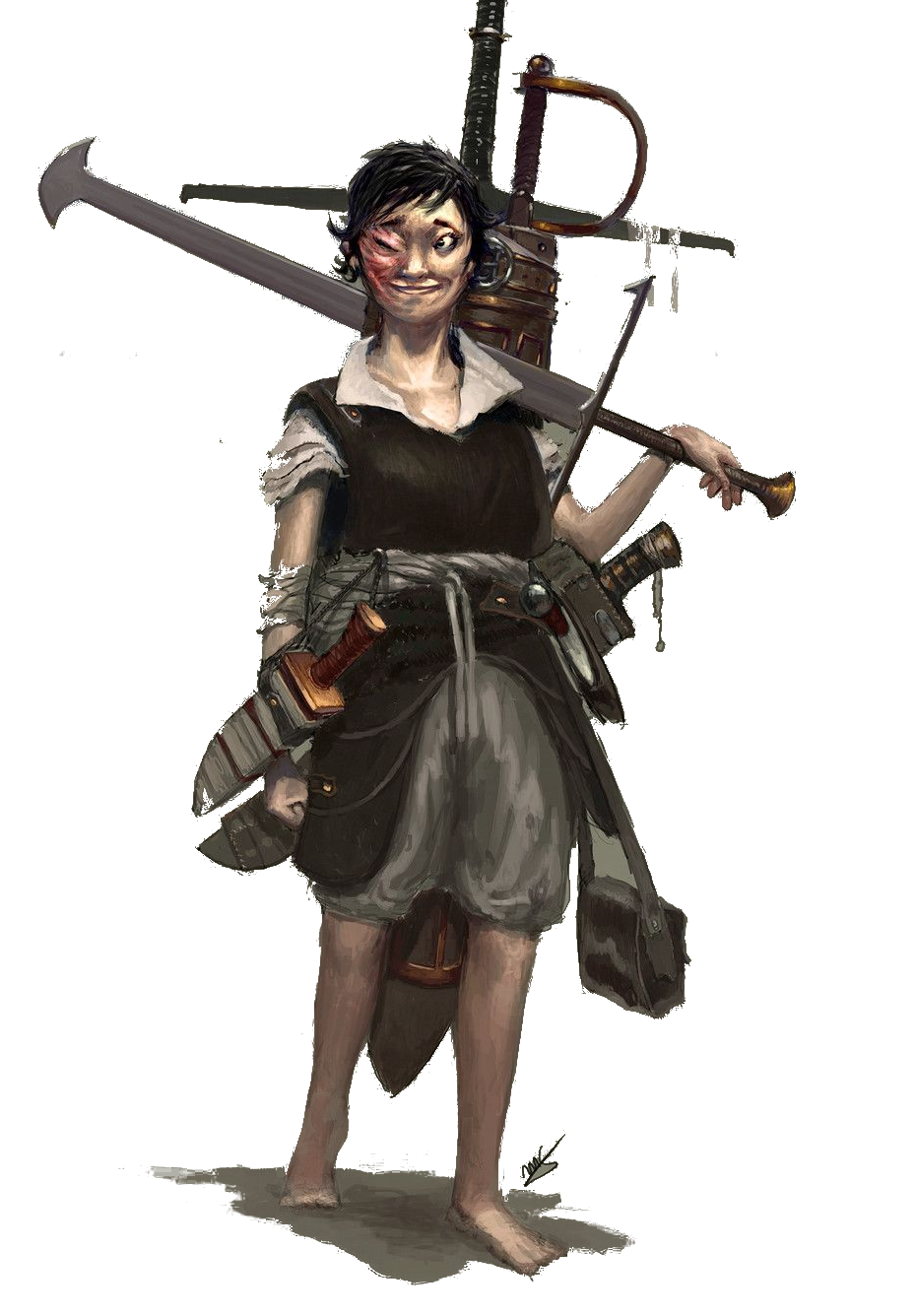

Siege Engines
The mightiest mundane items, siege engines are expensive, slow artillery used in large battles. Their might allows settlements without magic or heroes to defend themselves against supernatural threats. Each requires a certain number of actions to load, aim, and attack (in that order), and can be operated by either a crew or a single creature across multiple turns. A crew must have appropriate ammunition, as detailed later in this section, to fire a siege engine.
As objects, each engine is immune to psychic and poison damage. The table below details their statistics. Each adds the listed bonus to its attack and damage rolls, and all save the cauldron, hwacha, and organ gun deal doubled damage to objects and structures. A siege engine's damage changes based on the ammunition loaded into it. When targeting a creature, damage from a siege engine is for considered magical for the purpose of overcoming resistance and immunity to nonmagical attacks and damage so long as the engine's target is one size larger than it or smaller.
Siege Engines
| Name | AC | HP | Size | Range | Bonus | Weight | Price | To-Load | To-Aim | To-Attack |
|---|---|---|---|---|---|---|---|---|---|---|
| Ballista | 15 | 50 | Large | 250/300 ft. | +6 | 2 tons | 1,500 gp | 2 | 1 | 1 |
| Cannon | 19 | 75 | Large | 300/1700 ft. | +8 | 5 tons | 3,000 gp | 6 | 1 | 1 |
| Cauldron | 19 | 20 | Medium | 5 ft. | — | 160 lb. | 35 gp | 3 | 1 | 1 |
| Hwacha | 15 | 50 | Medium | 500/1500 | +5 | 500 lb. | 200 gp | 5 | 1 | 1 |
| Organ Gun | 17 | 40 | Large | 60 ft. cone | +5 | 700 lb. | 1,000 gp | 10 | 1 | 1 |
| Ram | 15 | 100 | Huge | 5 ft. | +8 | 3 tons | 200 gp | — | 5 | 1 |
| Siege Tower | 15 | 200 | Gargantuan | — | — | 10 tons | 2,500 gp | — | — | — |
| Trebuchet | 15 | 150 | Huge | 300/1,200 | +6 | 2.5 tons | 1,500 gp | 3 | 3 | 1 |
| Xun Lei Chong | 15 | 40 | Small | 60/120 | +5 | 55 lb. | 1,000 gp | 5 | 1 | 1 |
Ballista. A torsion-spring-based siege weapon used by the Romans that fires an oversized bolt or sizable stone over impressive range. Resembles a crossbow in apperance, but not mechanical design.
Cannon. Gunpowder artillery made from bronze or iron that fired large balls at enemy fortifications. The cannons in this document are muzzle-loaded, lack wheels, and have the gunpowder property.
Cauldron. Filled with liquid and suspended above a gate, wall, or portcullis, creatures in a 5-foot-radius cylinder extending from the cauldron to the ground must succeed on a DC 15 Dexterity saving throw or take damage, or half as much on a successful saving throw.
Hwacha. A large handcart loaded with 100 firework-propelled arrows used extensively in Korea against invaders. Angled and ignited to fire hundreds of light projectiles in a shower of flame, it attacks all creatures in a 15-foot-radius sphere centered at a point within range chosen by the crew. The attack also ignites flammable objects within its area of effect that aren't being worn or carried.

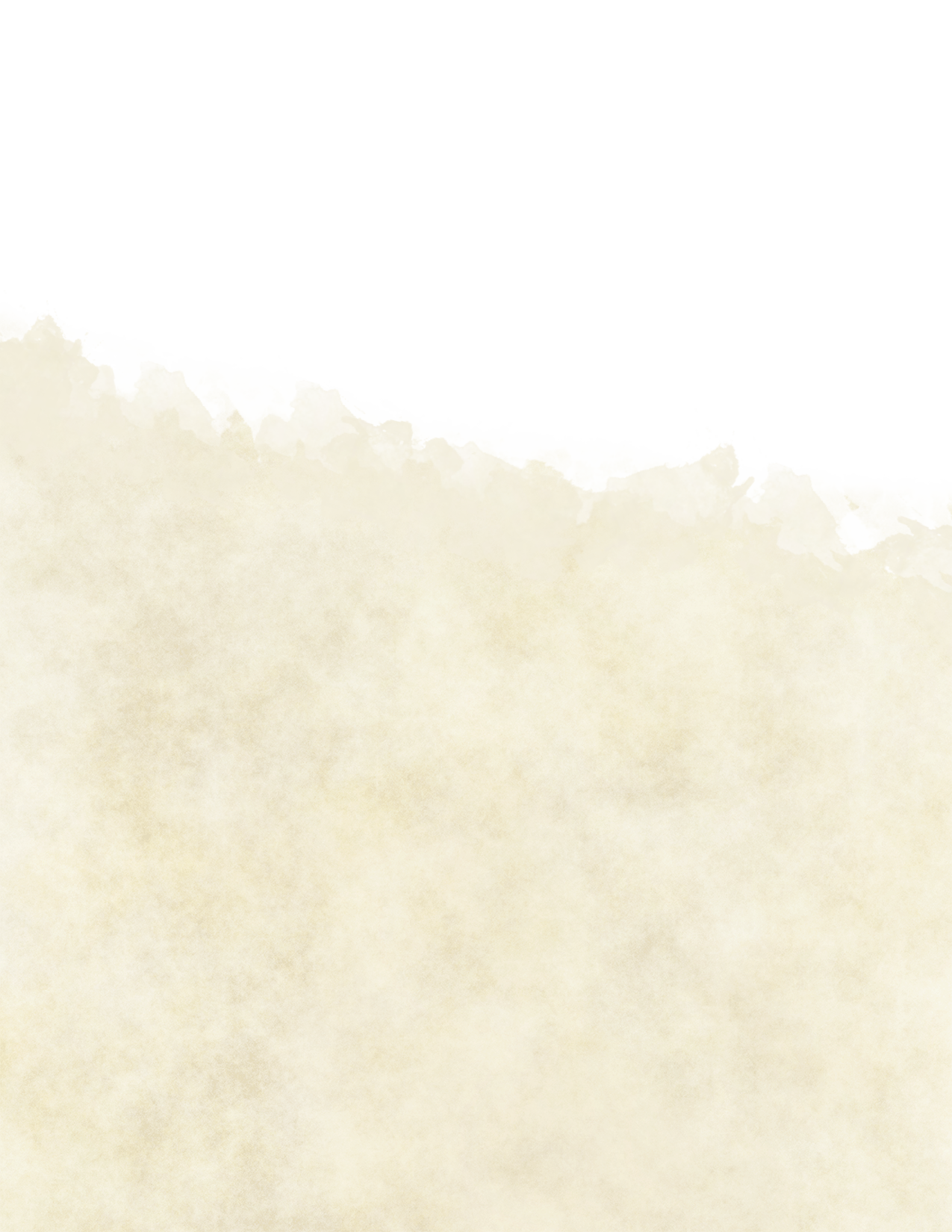
Organ Gun. A set of fanned barrels used as an anti-personnel weapon during the Hundred Years' War. An organ gun's massive spread allows targets to escape its grasp; it has disadvantage on all attacks. An organ gun expends 10 bullets for every attack it makes, and does 2d8 piercing damage to each target it hits.
Ram. This movable galley is equipped with an iron-clad log suspended by chains. It requires 6 medium creatures to operate, which have total cover against attacks from above. When it attacks a door or wall, it has advantage on the roll, and deals 3d10+6 bludgeoning damage to that structure.
Siege Tower. A siege tower is a mobile wooden structure with a beam frame and slats in its walls. Large wheels or rollers allow the tower to be pushed or pulled by 8 medium creatures or 4 large ones . Medium or smaller creatures can use the siege tower to reach the top of walls up to 40 feet high. A creature in the tower has total cover from attacks outside the tower.
Trebuchet. These siege engines hurl their payloads in high arcs that hit targets behind all but total cover, and can arc over walls. The creature which aims the trebuchet chooses a point in range at least 60 feet away. All creatures within 5 feet of that point must succeed on a DC 16 Dexterity saving throw or takes 8d10 bludgeoning damage. Objects in that area also take damage. In addition to heavy stones, trebuchets can fire a variety of other items, which change the amount and type of damage that it deals.
Xun Lei Chong. A single-man siege weapon made from five gun barrels mounted on a single axis, that uses a rotating fuse mechanism to fire multiple shots at one target. A xun lei chong does 10d8 piercing damage on a hit, and expends 5 bullets for every attack it makes. This weapon has the gunpowder property, and its user is both prone and gains half cover when using it.
Cauldron Contents
You can fill a cauldron with more than boiling water. The table below lists several alternate options, as well as water. A cauldron is assumed to contain 20 gallons of liquid, or the volume of 160 standard flasks.
| Name | Damage | Cost |
|---|---|---|
| Acid | 4d6 acid | 500 gp |
| Boiling Fat | 4d6 fire | 1 gp |
| Holy Water | 3d6 fire | 500 gp |
| Lava | 10d8 fire | — |
| Boiling Oil | 5d6 fire | 32 gp |
| Boiling Pitch | 6d6 fire | 5 gp |
| Boiling Water | 3d6 fire | — |
Boiling Oil. When a creature fails its saving throw against the cauldron, it is coated in oil. If the target takes any fire damage before the oil dries (after 1 minute), the target takes an additional 10 fire damage from the burning oil. A 5-foot-radius circle directly below the cauldron is also covered in oil. If lit, the oil burns for 4 rounds and deals 10 fire damage to any creature that enters the area or ends its turn there. A creature can take this damage only once per turn.
Holy Water. Fiends and undead take an additional 4d6 radiant damage from a cauldron of holy water on a failed saving throw, or half as much damage on a success.
Magma. Only the strongest magical cauldrons can withstand the heat of boiling magma, but it can be a potent siege weapon in battles with magically-gifted combatants.
Boiling Pitch. When a creature fails its save against the cauldron, it is covered in sticky goo. The target's speed is halved until it takes 10 minutes to scrape the tar from its body. If it hasn't removed the tar after 1 hour passes, the tar hardens, and it is restrained until another creature removes the material.
Trebuchet Ammunition
Trebuchets can be loaded with a variety of other projectiles with different damage and areas of effect.
| Name | Damage | Cost | Weight |
|---|---|---|---|
| Barrel, Alc. Fire | 5d10 bludgeoning | 4,000 gp | 90 lb. |
| Barrel, Sewage | 5d10 bludgeoning | 4 gp | 80 lb. |
| Boulder | 8d10 bludgeoning | 1 gp | 20 lb. |
| Bomb | varies | varies | 10 lb. |
| Corpse | varies | – | Varies |
Barrel of Alchemist's Fire. After the initial impact, alchemist's fire explodes in all directions. Every creature within 30 feet of the point where the barrel landed must make a DC 16 Dexterity saving throw. On a failed save, it takes 8d4 fire damage, or half as much on a success. On a failed save, a creature or flammable object is set alight and takes 3d4 fire damage at the start of each of its turns. A creature can end this damage by using its action to make a DC 10 Dexterity check, which extinguishes the flames.
Barrel of Sewage. After the initial impact, sewage seeps from the barrel in all directions. Every creature within 30 feet of the point where the barrel landed must succeed on a DC 16 Constitution saving throw against disease or take 2d10 poison damage and contract sewer plague (DMG page 256). On a successful saving throw, a creature takes half as much poison damage and does not contract the disease.
Bombs. A trebuchet can fire up to 10 bombs of any type at once, which explode on impact. Each individual bomb forces its saving throw in its radius, against its effects.
Corpse. A corpse targets a space the same size as the creature it was in life (a 5 ft. square for a medium creature, 10 ft. for large, etc). The corpse of a Small creature deals 1d10 bludgeoning damage and 1d10 poison damage. The bludgeoning damage increases by 1d10 for every size above Small. Most trebuchets cannot fire Gargantuan creatures.
Other Ammunition
| Name | Damage | Cost | Weight | Weapon |
|---|---|---|---|---|
| Ballista Bolt | 2d10 piercing | 1 gp | 15 lb. | Ballista |
| Fire Arrow (20) | 3d6 piercing + 3d6 fire |
3 gp | 2 lb. | Hwacha |
| Iron Ball | 10d8 bludgeoning | 50 gp | 100 lb. | Cannon |
| Stone Ball | 8d8 bludgeoning | 15 sp | 70 lb. | Cannon |
Weapon Customization
Materials, extras, and other customizations for weapons diversify them even further. While not the numerical bonuses from masterwork items of older editions, these alterations allow you to customize your weapons further, and provide additional benefits.
Materials
A weapon's composition is just as important as its wielder's skill. While every weapon has a default material, different substances provide circumstantial benefits. The material of a weapon cannot be changed after its creation. All the materials listed here can be used to make melee weapons, ranged weapons, armor, ammunition, and foci, though not all have an effect in each form.
Adamantine. An ultra-hard jet-black metal with a multicolored sheen, weapons made from this meteoric iron devastate other objects. When you hit an object with an adamantine weapon or piece of ammunition, the hit is a critical hit. All adamantine melee weapons have the sundering property, against all types of wearable armor. If a creature attempts to parry an attack you made with an adamantine melee weapon and your attack hits in spite of the attempt, both the target and the parrying weapon or shield take damage from the attack. When wearing adamantine armor, any critical hit against you becomes a normal hit. An adamantine item costs 500 gp more than the normal version, whether the item is made of the metal or coated with it.
Adamantite. A rare material created when underdark Faerzress corrupts adamantine deposits. Used extensively by drow, this material has all properties of adamantine, but also temporarily absorbs poison into itself. When you apply an injury poison to an adamantite weapon or piece of ammunition, the poison isn't removed after the first injury, but is instead applied every time you deal piercing or slashing damage to a creature until the poison dries naturally. When exposed to sunlight, adamantite weapons disintegrate.
Bone. A strong, off-white material scavenged from animal, monster, or humanoid corpses which is carved or cut into useful shape. Used in areas without access to wood or metal, items made of this inflexible material are as durable as their standard versions, but weigh half as much and have triple the cost. Wearing armor made from bone (an incredibly rare item thanks to bones' inflexibility and inconsistent quality) grants you advantage on saving throws against necromancy spells, and when you cast a necromancy spell through a focus made from bone you can reroll one of the spell's damage dice.
Bronze. A gold-colored alloy of copper and tin. Though replaced by iron and steel, bronze weapons are known for their magical affinity. When you create a magical weapon, armor, or piece of ammunition with bronze, it takes half the time and price. Bronze weapons cost 50% more than their iron counterparts, but are produced and sold by few smiths. Most bronze weapons are antiques, though the use of bronze-cast cannon and bombards has caused it to return.
Mundane and Magical
Most smiths can only create items out of wood, iron, and steel, while specialized craftsmen can make items from bone, bronze, ironwood, obsidian, and stone. The rest are magical materials (and weapons made from them are considered magical for the purposes of overcoming resistance and immunity to nonmagical attacks and damage), and cannot be purchased; they must be found or created as other magical items are.


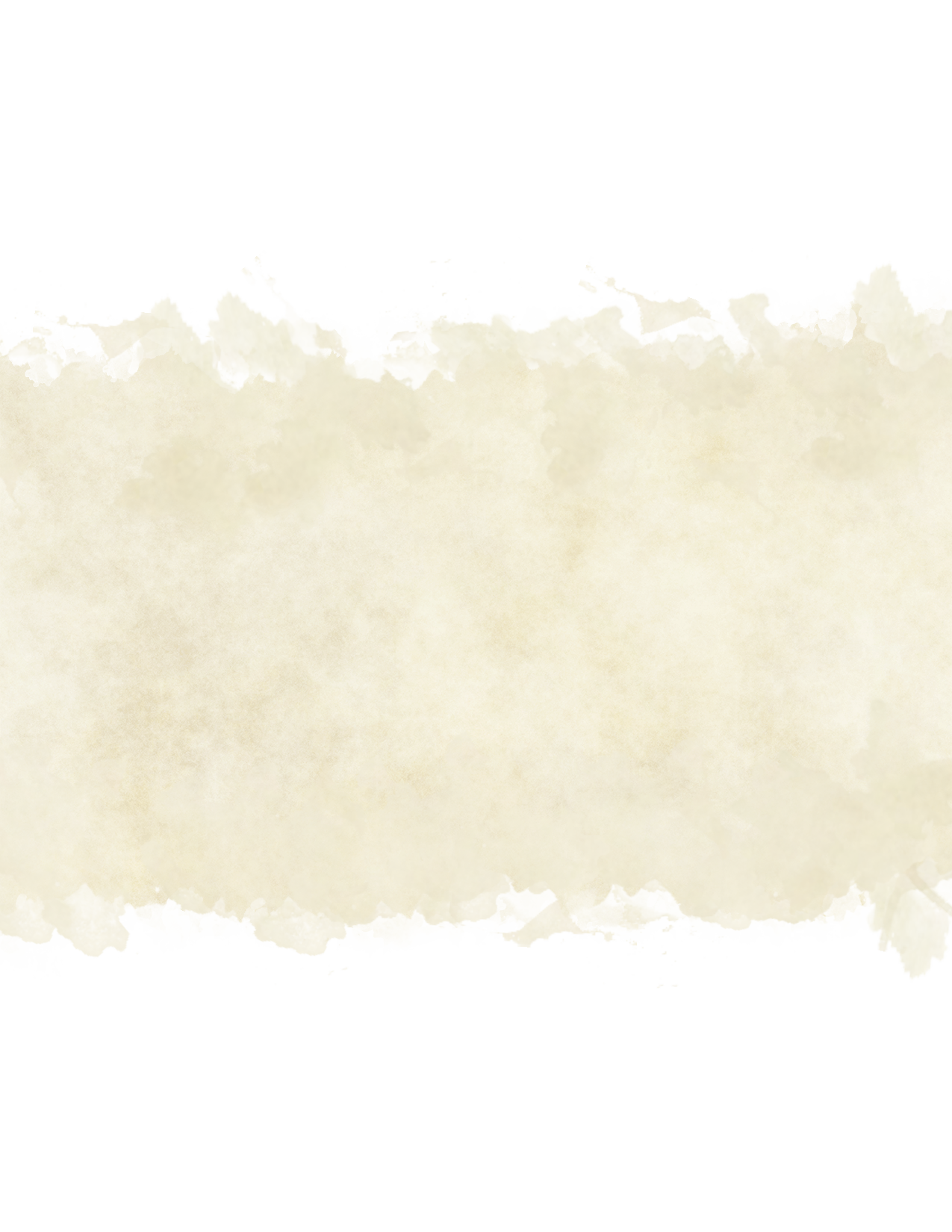
Cold Iron. They may rust and deform more quickly than steel, but iron weapons hold a key advantage besides their low cost and ubiquity: they are anathema to fey. Iron weapons ignore fey creatures' resistances and immunities to nonmagical weapons and damage, and when a fey creature starts its turn in contact with an item made of iron, it takes 1 fire damage. All iron is considered cold iron, and iron is one of the most common materials used to make weapons. Fey are not pleased by this development.
Flametouched Iron. Native to the material planes of Eberron, this dark gray metal takes on a reddish sheen when refined. When used to attack an evil creature or an undead, a weapon made from flametouched iron is considered magical for the purposes of overcoming resistance and immunity to nonmagical damage. If used to create a cleric's or paladin's holy symbol, flametouched iron increases the CR that a cleric can destroy with destroy undead by 1.
Ironwood. A substance grown and tempered by warrior-druids for weapons and armor, this fireproof wood is as dense and resilient as steel. Ironwood items are considered wood, rather than metal, for the purposes of spells and other effects that target those materials, and can't be set on fire by effects that ignites objects that aren't being worn or carried.
Mithral. A light, flexible material, mithral armor removes Strength requirements and disadvantage on Stealth checks inflicted by wearing certain armor. Weapons made from mithral are similarly light, weighing half as much as their iron counterparts. Mithral weapons with the Heavy property can be used to make extra attacks regardless of the user's strength and can be wielded normally by small creatures.
Obsidian. A precious volcanic glass, weapons made with this delicate material are incredibly sharp. In addition to its typical properties, an obsidian weapon that deals piercing or slashing damage gains the corresponding status property if it didn't have it already, and inflicts a status effect when it exceeds the target's AC by 3 or more, rather than 5. Weapons made from obsidian cost four times as much as their mundane counterparts.
Silver. Some monsters with immunity or resistance to nonmagical weapons are susceptible to silver, so cautious adventurers invest extra coin to plate their weapons with silver. The cost represents not only the price of the silver, but the time and expertise needed to add silver to the weapon without making it less effective. It costs 100 gp to silver a weapon or 10 pieces of ammunition. Unlike most materials, a weapon that is silvered retains all the properties of its original material.
Steel. The best mundane metal that can be made by a typical weaponsmith. It has no magical properties, but its nature allows smiths to select for sharpness, flexibility, hardness, and durability. Its relative resistance to wear and ease of maintenance has made it a material of choice across the world. Steel weapons cannot be damaged by monster features that corrode, damage, or dissolve metal, such as black puddings' corrosive form, and cost 50% more than their iron counterparts. Weapons made from steel by default are listed with their cost when made of steel.
Stone. All weapons made from stone deal bludgeoning damage, even if it would normally deal another type. All weapons and armor made with stone have the heavy property, lose finesse and light properties if they have them, weigh 4 times as much as usual, and cost twice as much.
True Ice. An exceptional magical material, True Ice comes from the core of polar caps and mountain peaks, and never melts. Elementals aligned with fire or water are vulnerable to damage from true ice weapons. Armor made from True Ice grants resistance to fire damage and immunity to atmospheric hazards in hot environments, but halves the time required to make saves against cold.
Wood. Softer and more flexible than most materials, wood is used to make most ranged weapons and some ammunition and does not alter the statistics of those weapons. A wooden weapon or piece of ammunition has the blunted modification if it is not made from wood by default, and costs half as much. If the weapon's default material is wood, it works as normal, and uses its listed cost.

Default Materials
Most weapons are made of a combination of wood and a metal (typically iron), and very few weapons use only one. For example, crossbows and arquebuses used both wood and metal, bows use specific types of wood or horn for the arms and sinew for the string, and so on. Melee weapons, especially polearms, used a haft made of wood and a head made of iron or steel. Armor features several layers of cloth padding beneath its metal exterior. For simplicity's sake this table lists only one type of material, either the one which comprises most of the item (for ranged weapons and ammunition) or the material of the component that contacts the target (for melee weapons).
Weapon Materials
| Weapon | Default Material |
|---|---|
| Boar Spear | Iron |
| Club | Wood |
| Dagger | Iron |
| Goedendag | Iron |
| Greatclub | Wood |
| Handaxe | Iron |
| Javelin | Iron |
| Light Hammer | Iron |
| Mace | Iron |
| Quarterstaff | Wood |
| Shortspear | Iron |
| Sickle | Iron |
| Blowgun | Wood |
| Dart | Wood |
| Light Crossbow | Wood |
| Sling | Leather |
| Staff Sling | Wood |
| Arming Sword | Steel |
| Bastard Sword | Steel |
| Battleaxe | Iron |
| Estoc | Steel |
| Flail | Iron |
| Glaive | Iron |
| Greataxe | Iron |
| Greatsword | Steel |
| Guisarme | Iron |
| Halberd | Iron |
| Harpoon | Iron |
| Lance | Iron |
| Longsword | Steel |
| Lucerne | Iron |
| Weapon | Default Material |
|---|---|
| Maul | Iron |
| Morningstar | Iron |
| Parrying Dagger | Iron |
| Pike | Iron |
| Pollaxe | Iron |
| Ranseur | Iron |
| Rapier | Steel |
| Rondel | Steel |
| Sabre | Steel |
| Scimitar | Steel |
| Shortsword | Steel |
| Shotel | Iron |
| Spear | Iron |
| War Pick | Iron |
| Warhammer | Iron |
| Atlatl | Wood |
| Hand Crossbow | Wood |
| Heavy Crossbow | Wood |
| Longbow | Wood |
| Recurve Bow | Wood |
| Cestus | Leather |
| Chain Whip | Iron |
| Garotte Wire | Cloth |
| Gauntlet-Sword | Steel |
| Hooksword | Steel |
| Trident | Iron |
| Unarmed Strike | n/a |
| Whip | Leather |
| Arquebus | Wood |
| Boomerang | Wood |
| Greatbow | Wood |
| Handgonne | Wood |
| Net | Cloth |
Shield Materials
| Item | Default Material |
|---|---|
| Buckler | Iron |
| Shield | Wood |
| Tower Shield | Iron |
| Dueling Shield | Iron |
| Lantern Shield | Steel |
Ammunition Materials
| Item | Default Material |
|---|---|
| Barbed Quarrel | Wood |
| Blowgun Needle | Wood |
| Bodkin Arrow | Wood |
| Broadhead Arrow | Wood |
| Bullet | Iron |
| Elemental Amm. | Varies |
| Field Arrow | Wood |
| Grapeshot | Iron |
| Hunting Bolt | Wood |
| Quarrel | Wood |
| Sling Bullet | Stone |
| Silver Bullet | Silver |
Armor Materials
| Item | Default Material |
|---|---|
| Leather | Leather |
| Gambeson | Cloth |
| Jackchains | Cloth |
| Hide | Leather |
| Breastplate | Steel |
| Brigandine | Iron |
| Cuirass | Iron |
| Half-plate | Steel |
| Scale | Iron |
| Hauberk | Iron |
| Splint | Iron |
| Full Plate | Steel |
Siege Engine Materials
| Engine | Default Material |
|---|---|
| Ballista | Wood |
| Cannon | Iron |
| Cauldron | Iron |
| Organ Gun | Iron |
| Ram | Wood |
| Siege Tower | Wood |
| Trebuchet | Wood |
| Xun Lei Chong | Iron |
Siege Ammunition Materials
| Ammunition | Default Material |
|---|---|
| Ballista | Wood |
| Iron Cannonball | Iron |
| Stone Cannonball | Stone |
Modifications
Weapons are not discrete items. They can be altered, gaining add-ons that improve their features or add new ones. You can make or purchase the modifications below and add them to the items they list. A weapon can have more than one modification, and modifications are permanent.
Mods
| Name | Price |
|---|---|
| Bayonet | 20 gp |
| Blunted | 10 gp |
| Butt Spike | 10 gp |
| Consecrated | 200 gp |
| Decorated | 100 gp |
| Enhanced Guard | 15 gp |
| Flaming | - |
| Furred | 10 gp |
| Guige | 2 sp |
| Name | Price |
|---|---|
| Guisarme Hook | 25 gp |
| Jagged | - |
| Penobscot Arms | 150 gp |
| Poison Reservoir | 1500 gp |
| Repeater | 300 gp |
| Scope | 6000 gp |
| Second Barrel | 500 gp |
| Serrated | 100 gp |
| Spiked | 20 gp |
Bayonet
Modifies: light crossbow, heavy crossbow, arquebus
When you wield a weapon with a bayonet attached, you can wield it as a melee weapon to make an attack that deals 1d6 piercing damage with a reach of 5 feet.
Blunted
Modifies: a melee weapon or 3 pieces of ammunition that deal piercing or slashing damage
The weapon can only deal bludgeoning damage and gains the nonlethal property. When you roll the highest number on a damage die, you must reroll the die and take the second roll.
Butt Spike
Modifies: boar spear, javelin, shortspear, glaive, greataxe, guisarme, halberd, harpoon, pike, pollaxe, ranseur, spear
When you come within 5 feet of a prone creature on your turn, you can use your bonus action to make a melee weapon attack against that creature. This attack deals 1d6 piercing damage. None of the weapon's properties apply to that attack.
Consecrated
Modifies: a weapon or three pieces of ammunition
Consecrated weapons are considered magical for the purposes of overcoming the resistances and immunities to nonmagical damage of fiends and undead. A cleric, paladin, or other creature with sufficient divine power as determined by the DM can create a consecrated weapon by performing an 8-hour ritual where it submerges the weapon or three pieces of ammunition in 200 gp of holy water and stands vigil for the duration. This consumes the holy water.
Decorated
Modifies: armor
The set of armor is decorated with paint, etching, precious metals, or gemstones. It confers no benefits on the battlefield, but may grant advantage on Persuasion checks while you wear it by creating an aura of wealth and prestige.
Enhanced Guard
Modifies: dagger, mace, arming sword, bastard sword, battlaxe, estoc, greatsword, longsword, morningstar, parrying dagger, rapier, rondel, shortsword
A sword with this guard, often a basket hilt, grants you advantage on checks to avoid being disarmed of it.
Fire Lance
Modifies: boar spear, goedendag, glaive, guisarme, lance, lucerne, pike, ranseur, spear
A explosive barrel packed with gunpowder and pellets attached to the end of a polearm. When you would attack with the weapon equipped with it, you can instead fire the lance, forcing each creature in a line 10 feet long and 5 feet wide extending from you to make a DC 14 Dexterity saving throw. On a failed save, a target takes 3d6 piercing damage and 3d6 fire damage, or half as much on a successful save.
If installed on a weapon with the reach property, the line's point of origin can be any point within 10 feet of you, rather than extending directly from you.
Flaming
Modifies: all melee weapons, three pieces of ammunition that are not bullets
For 1 minute, half the damage you deal with this weapon or piece of ammunition is fire damage. You can use an action to spread and light oil on 3 pieces of ammunition or a melee weapon, which sets them alight. Firing a piece of flaming ammunition more than half its weapon's normal range extinguishes it, which removes this modification. Items with this modification shed bright light in a 5 ft. radius, and dim light for another 5.
Furred
Modifies: armor
Armor lined or reinforced with animal hides and furs for warmth. When wearing furred armor, you make saving throws against extremely cold environments and weather with advantage, and against hot environments at disadvantage. Adding fur increases armor's weight by 5 pounds. Hide Armor is always furred.
Guige
Modifies: buckler, shield, tower shield, dueling shield
When you drop or are disarmed of a shield with a guige, it remains on your person instead of falling to the ground. It provides no bonus to armor class and you are not wielding it.
Guisarme Hook
Modifies: glaive, pike
A hook added to the back of the head which adds the ensnaring property to the weapon.
Jagged
Modifies: any melee weapon
A broken weapon can still be of some use. You cannot add your proficiency bonus to attack rolls made with this weapon, but it gains the status: slashing property until repaired.
Penobscot Arms
Modifies: shortbow, greatbow, longbow, recurve bow
When you roll a 1 on a weapon damage die for an attack you make with a bow that has this set of forward-facing secondary arms, you can reroll the die. You must use the new roll, even if the new roll is also a 1.
Poison Reservoir
Modifies: a melee weapon or three pieces of ammunition that deal piercing or slashing damage
A weapon with this modification stores up to 5 doses of one type of injury poison at one time. When you deal piercing or slashing damage to a creature, you can choose to deliver the poison. Poison in the reservoir never dries.
Repeater
Modifies: light crossbow, hand crossbow, heavy crossbow
This device attached to a crossbow allows you to fire it 5 times before reloading. You can load 5 pieces of ammunition instead of 1 when you load this weapon.
Scope
Modifies: light crossbow, shortbow, greatbow, heavy crossbow, longbow, recurve bow, arquebus
A weapon with a scope attached doesn't have disadvantage on attack rolls made beyond its standard range.
Second Barrel
Modifies: arquebus, handgonne
This additional barrel multiplies the weight of the gun by 1.5 and allows you to attack twice, instead of once, before reloading. You can load both barrels with a single action.
Serrated
Modifies: a melee weapon or three pieces of ammunition that deal piercing or slashing damage
When you land a critical hit or exceed a target's AC by 5 or more and deal piercing or slashing damage, you deal additional necrotic damage equal to half your proficiency bonus. Objects, Constructs, and Elementals and other creatures that do not bleed may be immune to this damage, at the discretion of your DM.
Spiked
Modifies: club, greatclub, cestus
When you land a critical hit or exceed a target's AC by 5 or more, you deal additional piercing damage equal to your proficiency bonus.
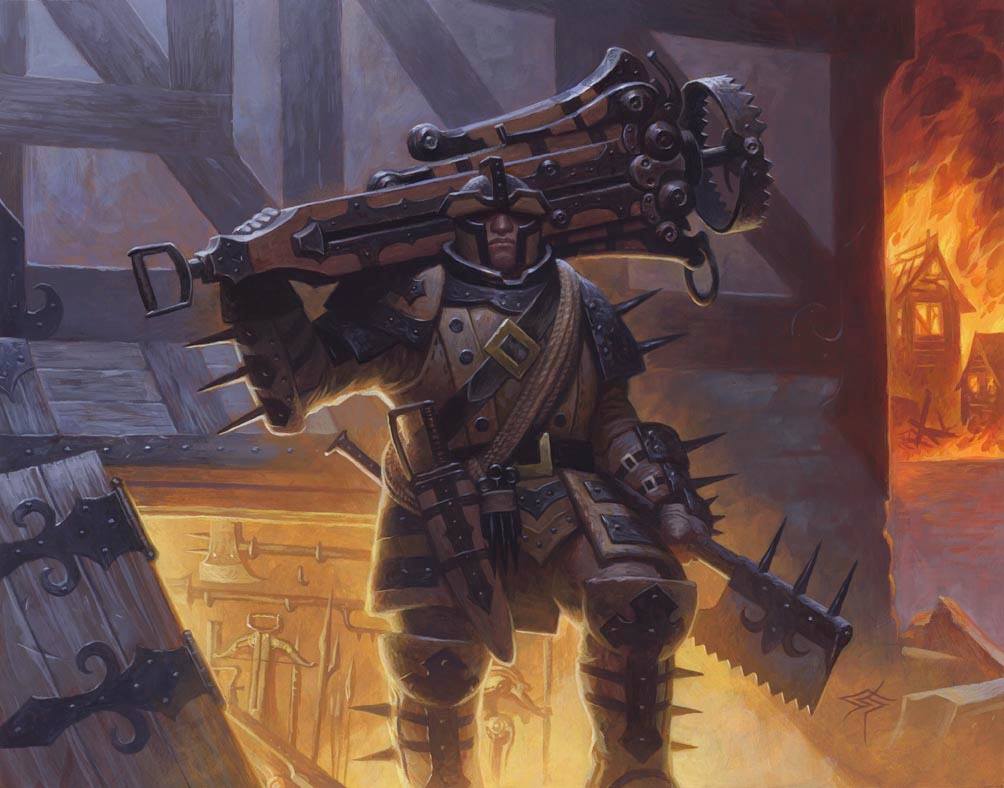
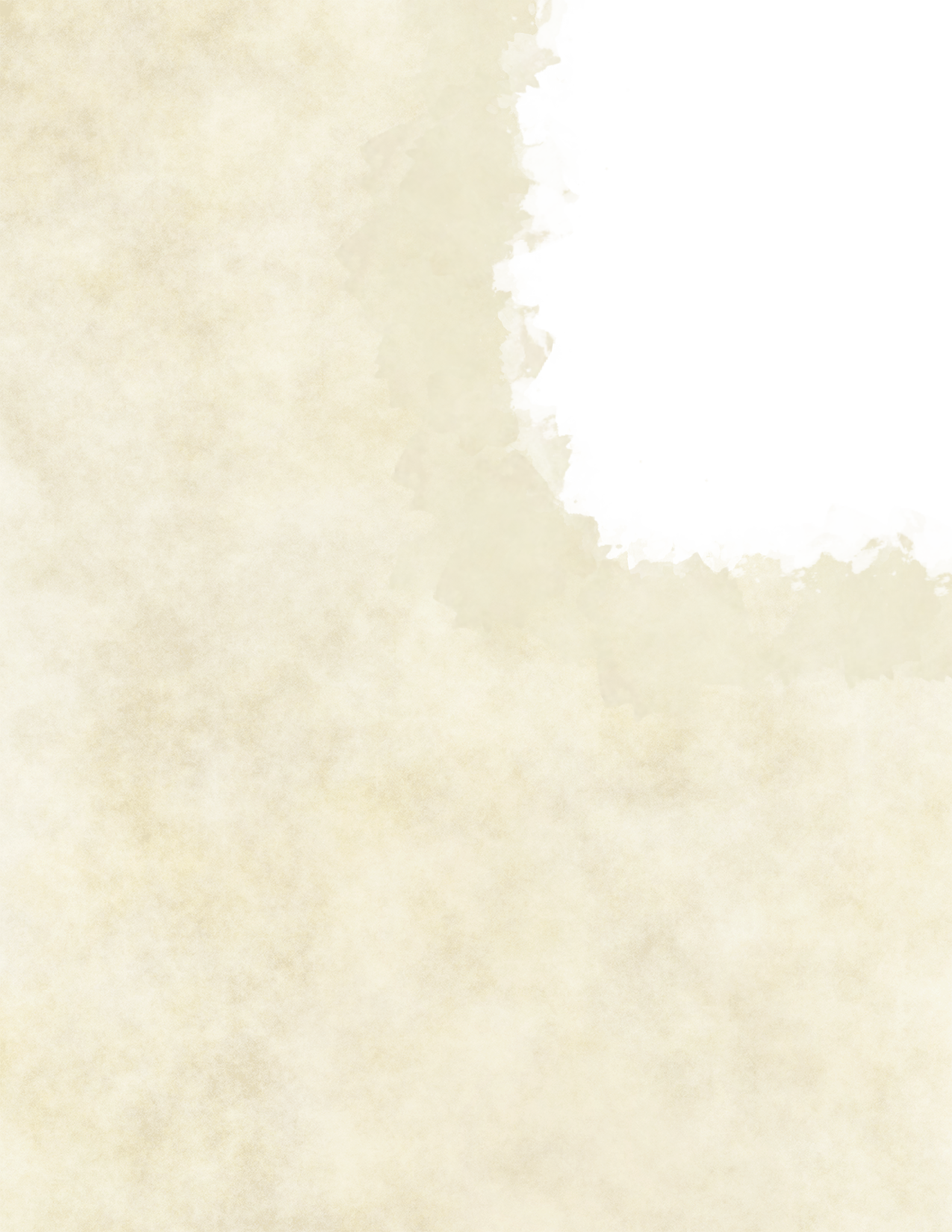

Alternative Weapons
Many weapons can be represented by the same mechanics. Examples are listed on the table below. Weapons use the same statistics, though their damage types may differ. That change is listed in parentheses: (b) for bludgeoning, (p) for piercing, and (s) for slashing. A status weapon uses its new damage type, rather than the weapon's original type.
Since most alternates originate from cultures and eras outside D&D's early-renaissance European pastiche—such as Rome, Japan, China, India, and Polynesia—they are not appropriate for every game and location. The DM is within their rights to disallow any alternative on this list.
| Weapon | Alternative |
|---|---|
| Atlatl | Spear-thrower, woomera |
| Arming Sword | Broadsword, falchion (s), niuweidao, saintie (p) |
| Arquebus | Bo-hiya, tanegashima |
| Bastard Sword | Katana, miaodao |
| Battleaxe | Bhuj, dadao, fu, khopesh, machete, masakari |
| Buckler | Parma |
| Cestus | Bagh nakh (s), emeici (p), knuckleduster, push dagger (p), shobo, suntetsu, tekko, vajra-mushti (p) |
| Chain Whip | Spiked chain (p), kusari-fundo, kusarigama (p), meteor hammer |
| Club | Bian, blackjack, cosh, hanbō, jō, mere, patu tambo, tekkan, tonfa |
| Dagger | Bishou, kaiken, kozuka, kunai, tamo, tanto |
| Flail | Chigiriki, nunchaku (b), sanjie gun (b), urumi (s) |
| Goedendag | Plançon a picot |
| Glaive | Bill, bisento, bardiche, falx, fauchard, guandao, lochaber axe, naginata, rhompaia, sovnya, swordstaff, voulge |
| Weapon | Alternative |
|---|---|
| Greatclub | Peasant flail, kanabo, tetsubo |
| Greatsword | Claymore, changdao, flamberge, nagamaki, nodachi, zanbatō, zweihander |
| Guisarme | Mancatcher, kama-yari, nunti bo, sasumata, sodegarami, tsukubō (b) |
| Halberd | Dagger-axe |
| Handaxe | Chakram, kpinga, kukri, ono, tomahawk |
| Handgonne | Bajō-zutsu |
| Harpoon | Makrigga |
| Hooksword | Chicken Sickles |
| Javelin | Mau, uchi-ne |
| Lance | Umayari |
| Light crossbow | Gastraphetes |
| Light Hammer | Chui |
| Longbow | Daikyu |
| Maul | Ōtsuchi |
| Mace | Jiǎn |
| Morningstar | Leiomano, macuahuitl (b/s) |
| Pike | Ahlspiess, sarissa, mao, nagaeyari |
| Parrying Dagger | Jitte (b), sai, wahaika (b) |
| Peasant Flail | Chang xiao bang |
| Pollaxe | Monk's spade, taiaha (bp) |
| Quarterstaff | Gun, bo |
| Ranseur | Corseque, ji, partizan, spontoon, rawcon |
| Rondel | Kabutowari, yoroi-dōshi |
| Sabre | Backsword, dao, firangi, tachi |
| Scimitar | Cutlass, liuyedao, uchigatana |
| Shield | Aspis, heater, ishlangu, kite, pelte |
| Shortspear | Assegai, hasta |
| Shortbow | Hankyu |
| Shortsword | Butterfly swords, falcata, gladius, jian, katar, tsurugi, wakizashi |
| Sickle | Falx, kama, makraka, wind & fire wheels |
| Spear | Doru, qiang, yari |
| Trident | Magariyari |
| Trebuchet | Catapult, mangonel |
| Tower Shield | Scutum |
| War Pick | Fang, kuwa, toki poutangata |
| Whip | Cat-o-nine-tails, lasso |
Alternate armors, fortunately, are a simple matter of scaling protection. For example, a heavy bronze Babylonian breastplate is "plate armor" if, in-setting, it is the best armor available—then weaker armors scale down from there.

